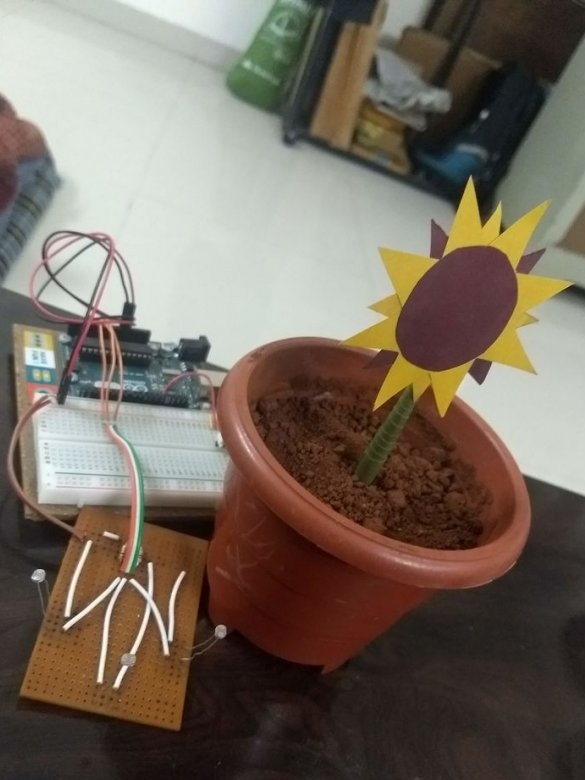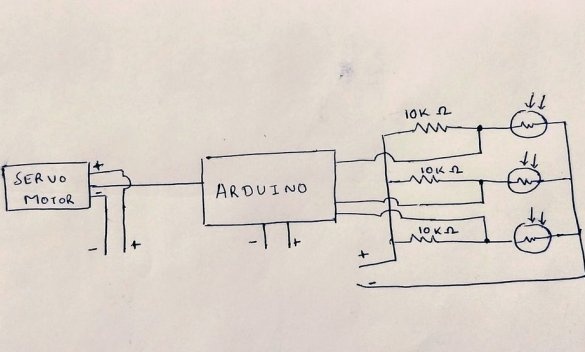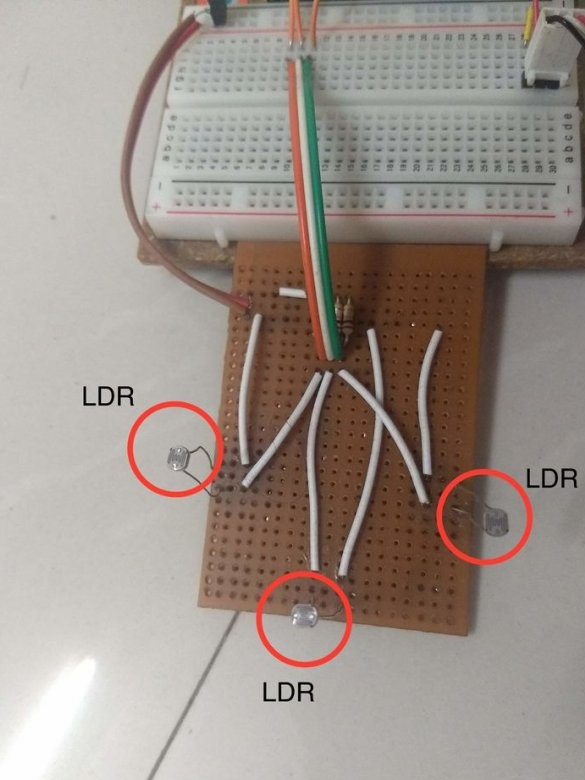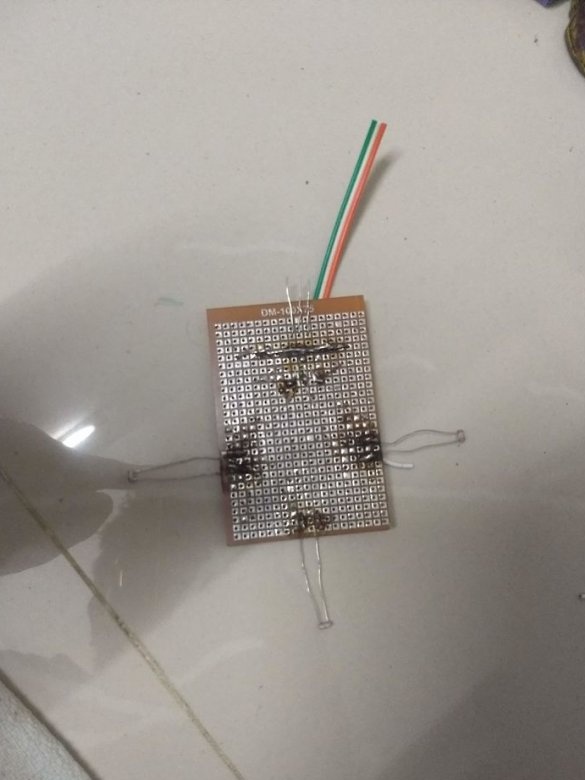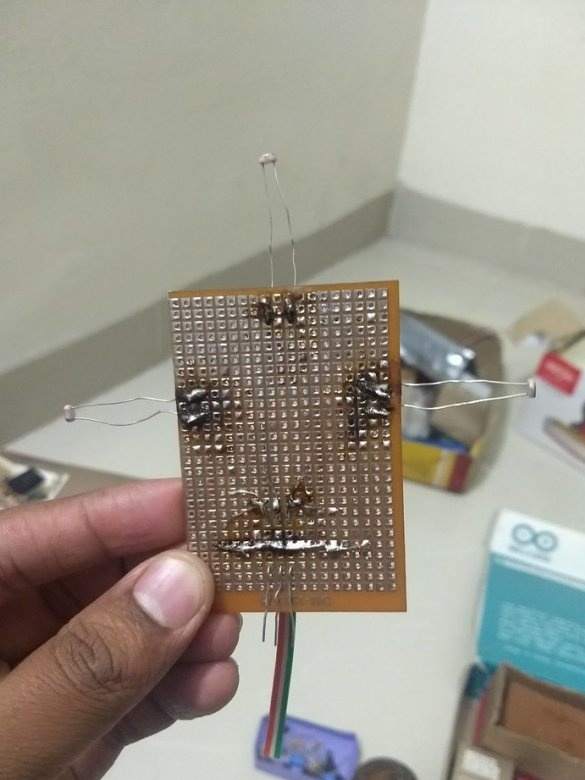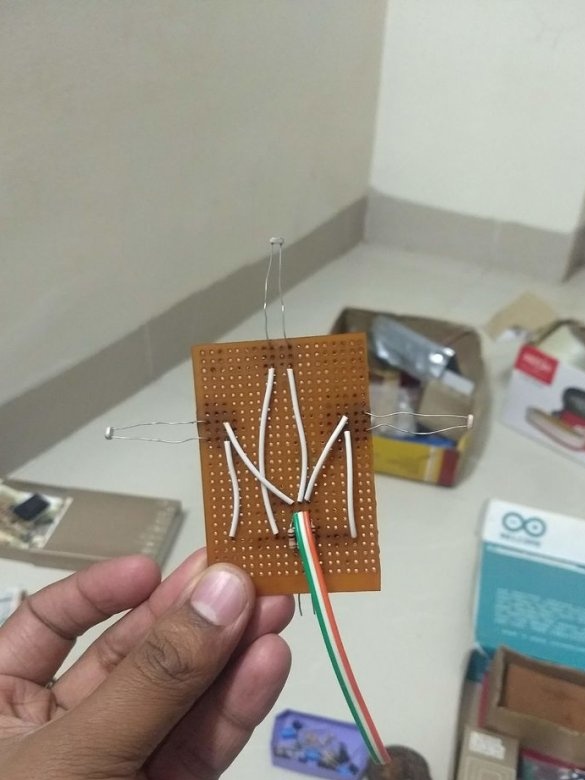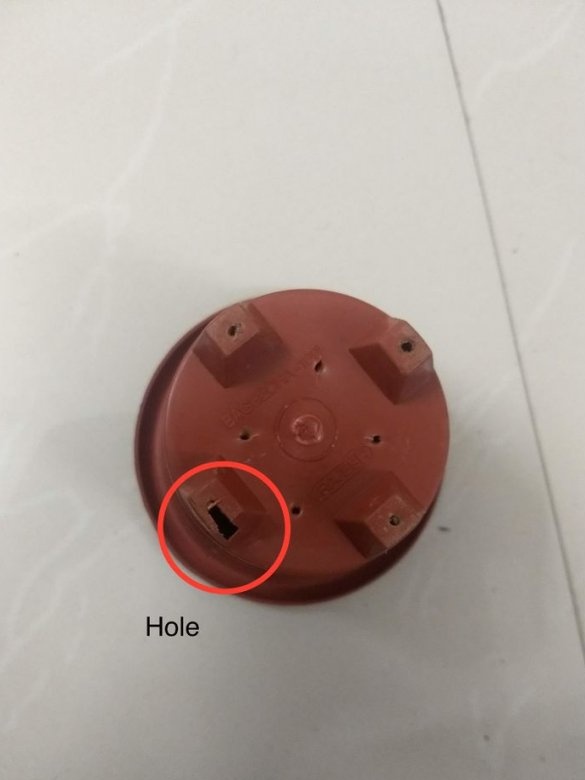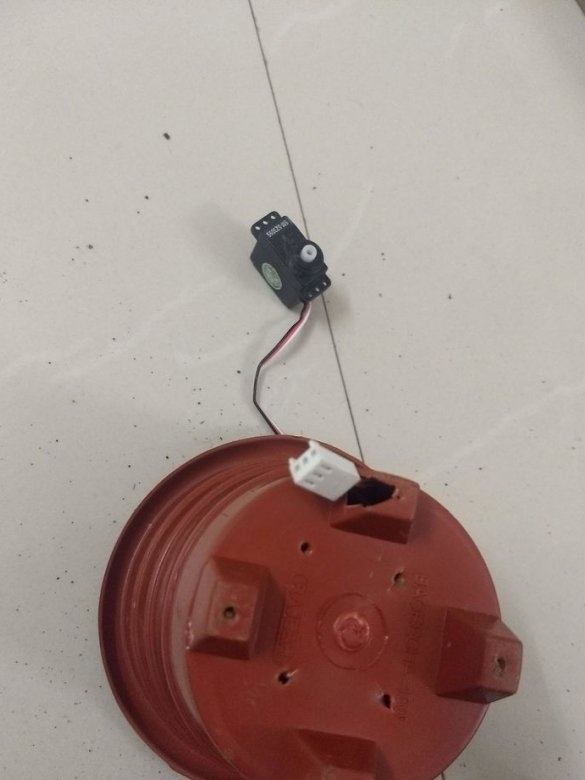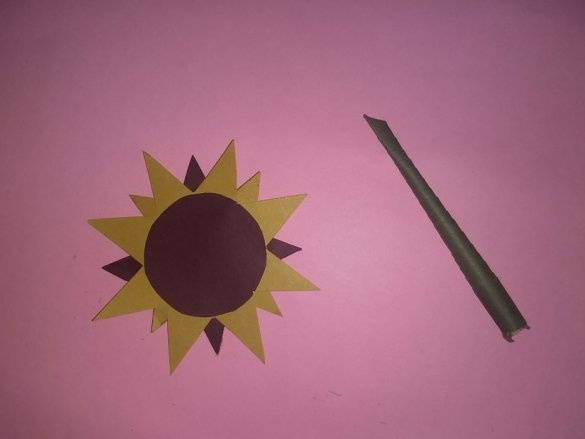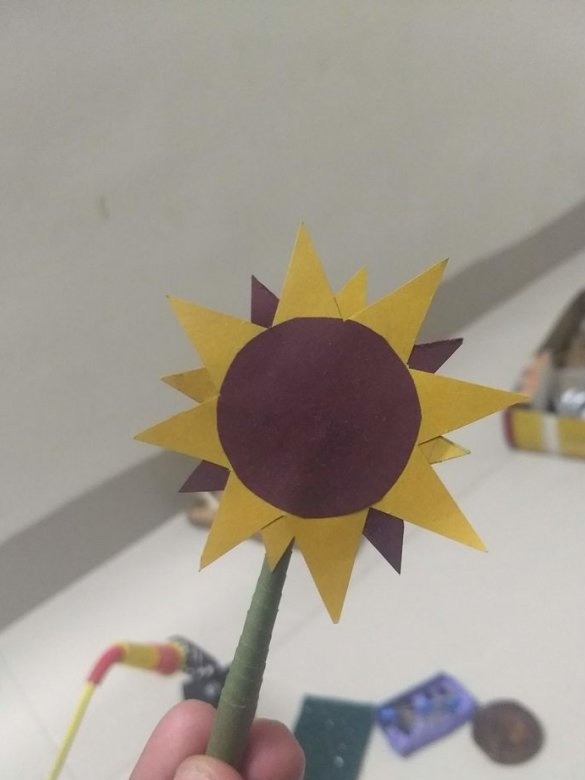And now turning away from the sun. It works very simply: there are three photoresistors, a front one and two side ones, on a fixed board. If the side photoresistors are illuminated and the front is not, the device rotates the sunflower layout forward. With any imbalance - turns in the appropriate direction. This design, combining electronics and humor, invented by Instructables under the nickname shivtej1505.
Photoresistors are pulled up by 10-kilo-ohm resistors. Thus, the brighter the photoresistor, the less the positive voltage relative to the common wire. Inconvenient, but software in Arduino inverts all three analog signals no worse than operational amplifiers, which are not needed. The same software generates a signal for controlling the servomotor using the standard servo.h library.
On two breadboards, one of type perfboard, the other of type breadboard, but so far without Arduino, it all looks like this:
The conclusions of the board to which the photoresistors and the servomotor are connected are set in sketch. If you do not change anything in it, the signals from the photoresistors will have to be fed to the analog inputs: from the left to A0, from the middle to A1, from the right to A2, and remove the signal for the servomotor from output 13.
The master solders photoresistors to the protboard type perfboard:
Connects them with a solder jumper:
And wires:
Extends the hole in the pot for outputting the wires of the servomotor with a connector:
Outputs this connector:
Makes a sunflower layout:
A perfboard-type board connects to a breadboard-type board, and through it to an Arduino, which flashes (link to the sketch above). Dry earth is poured into the pot, into which a servomotor with a mockup of sunflower on the shaft is inserted. The main thing is to accidentally not take the sunflower for real and water it. In general, do not strive for excessive realism. Robotic sunflowers can also cause the effect of the "sinister valley." Now let's see how it works:
Compared with a similar device by Himawari by Japanese author Akira Nakaushi, the proposed design is very simplified. It does not have an array of LEDs, several cameras, the processing power is significantly reduced.

